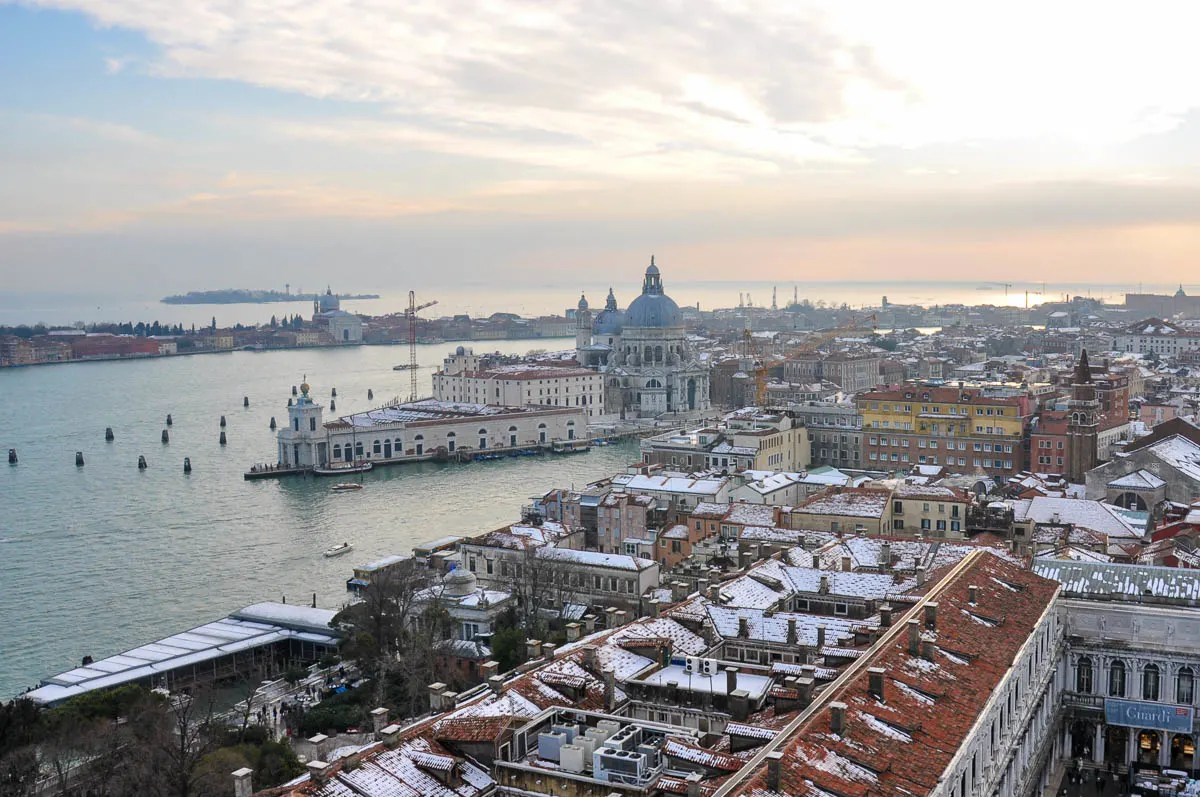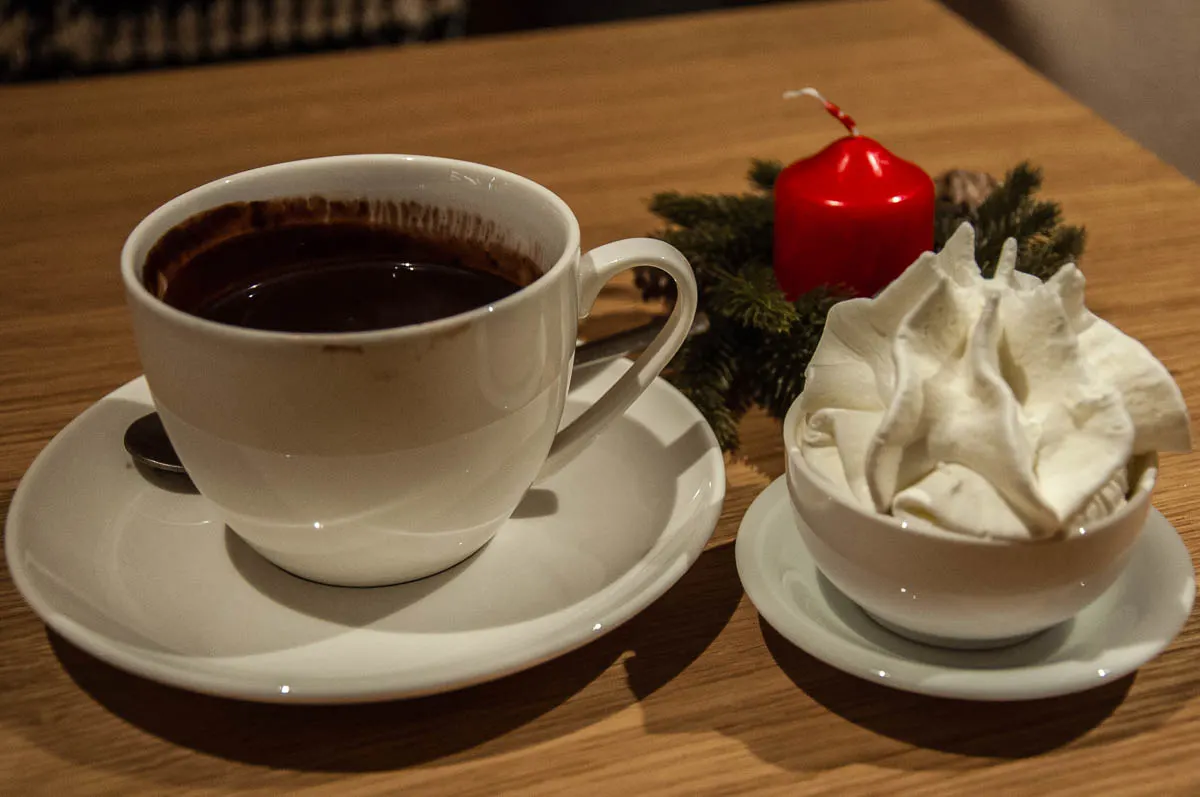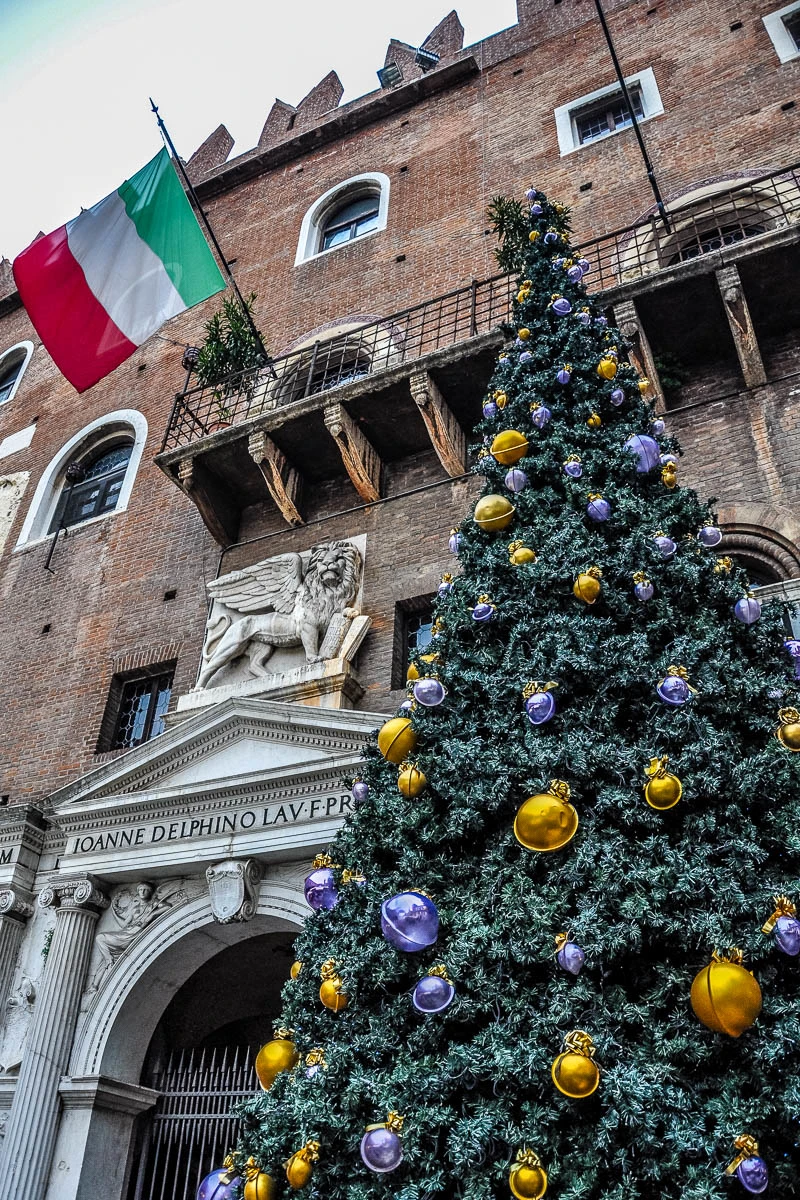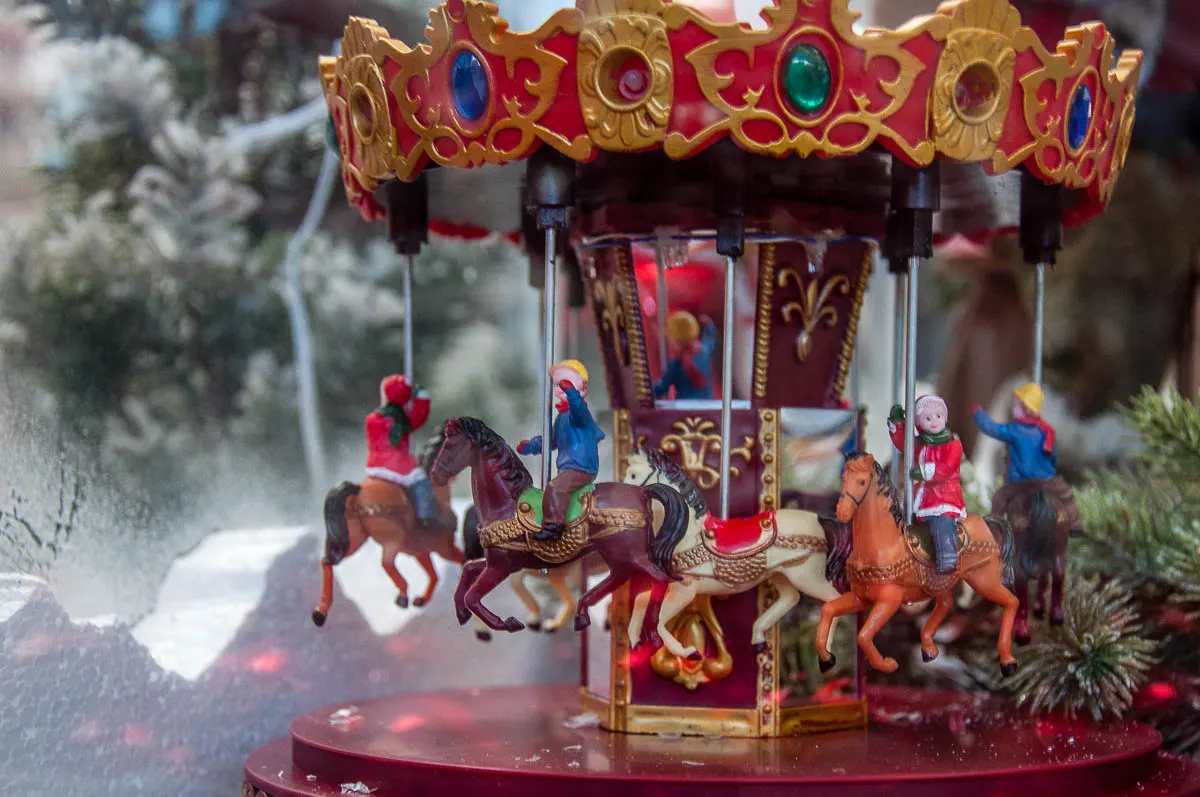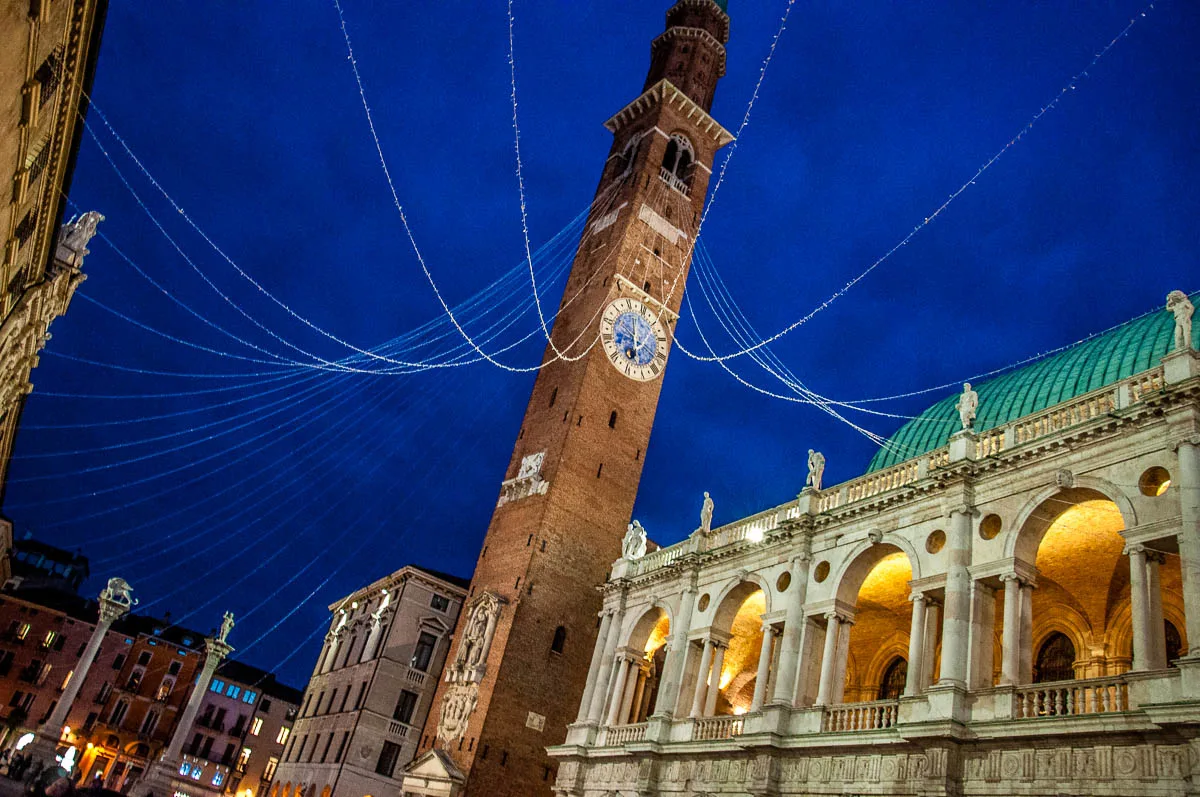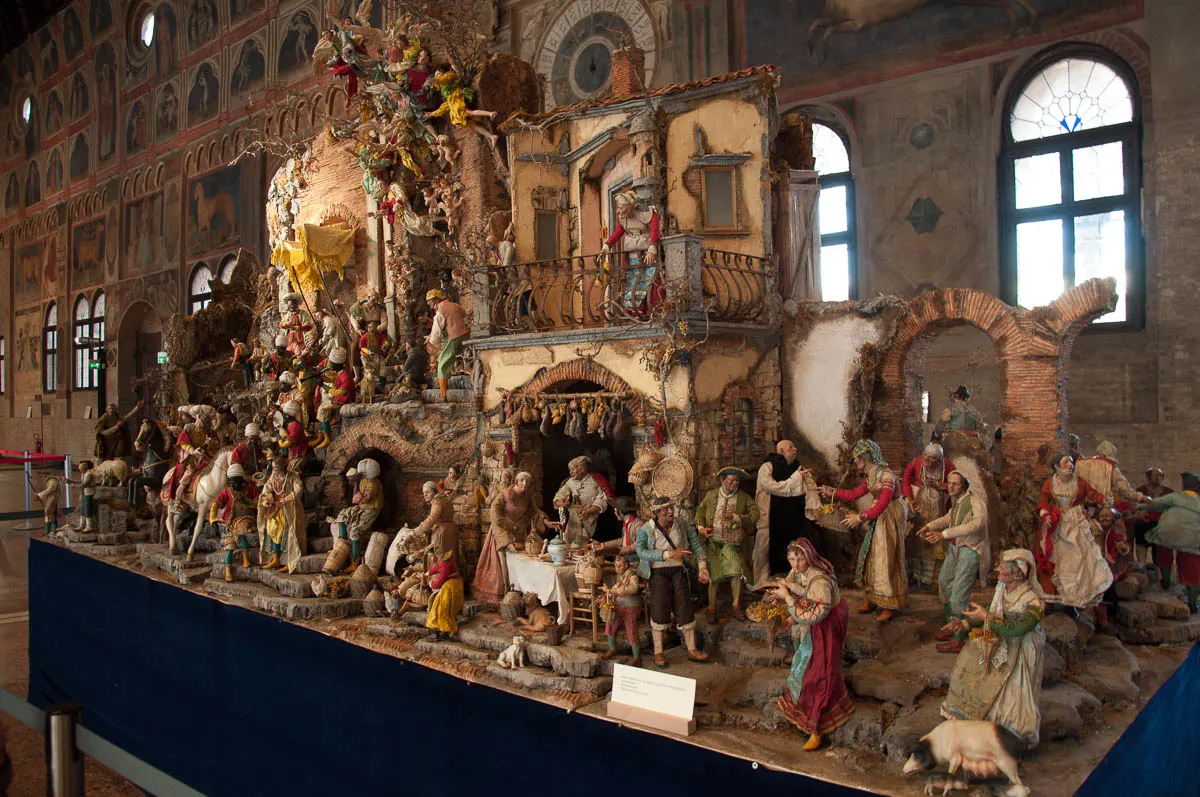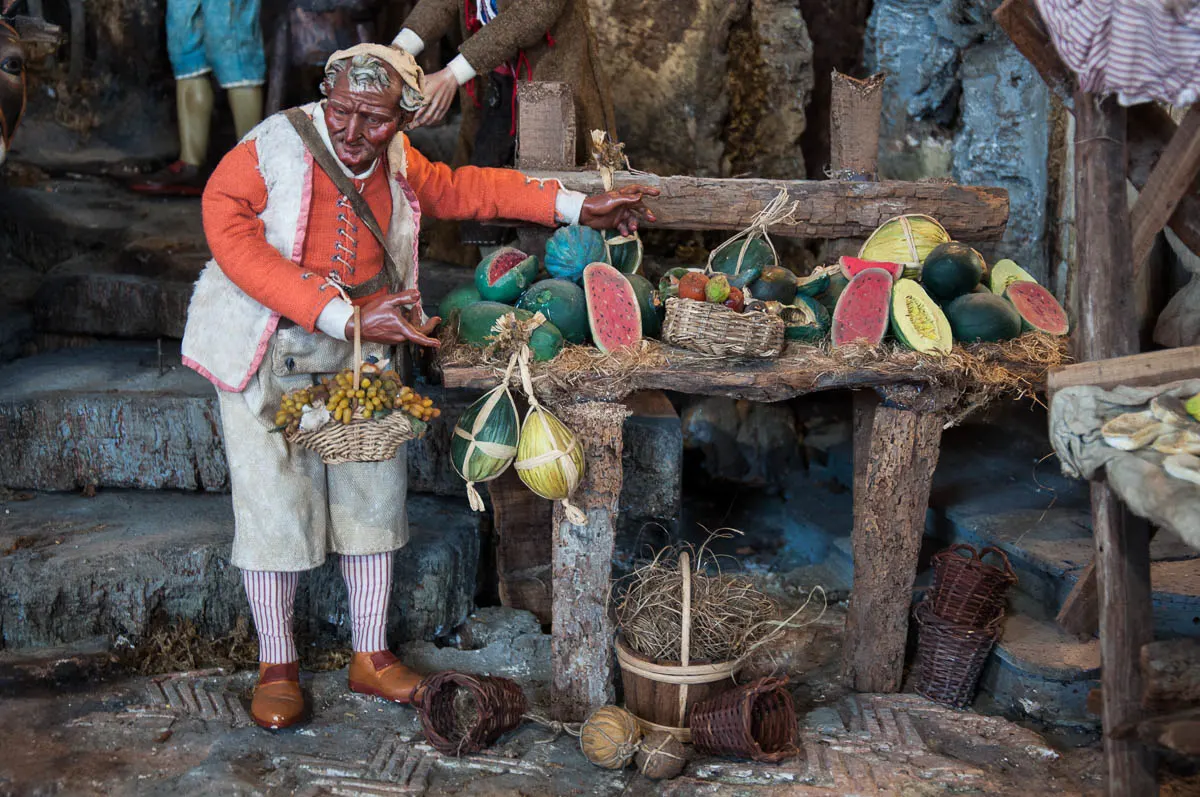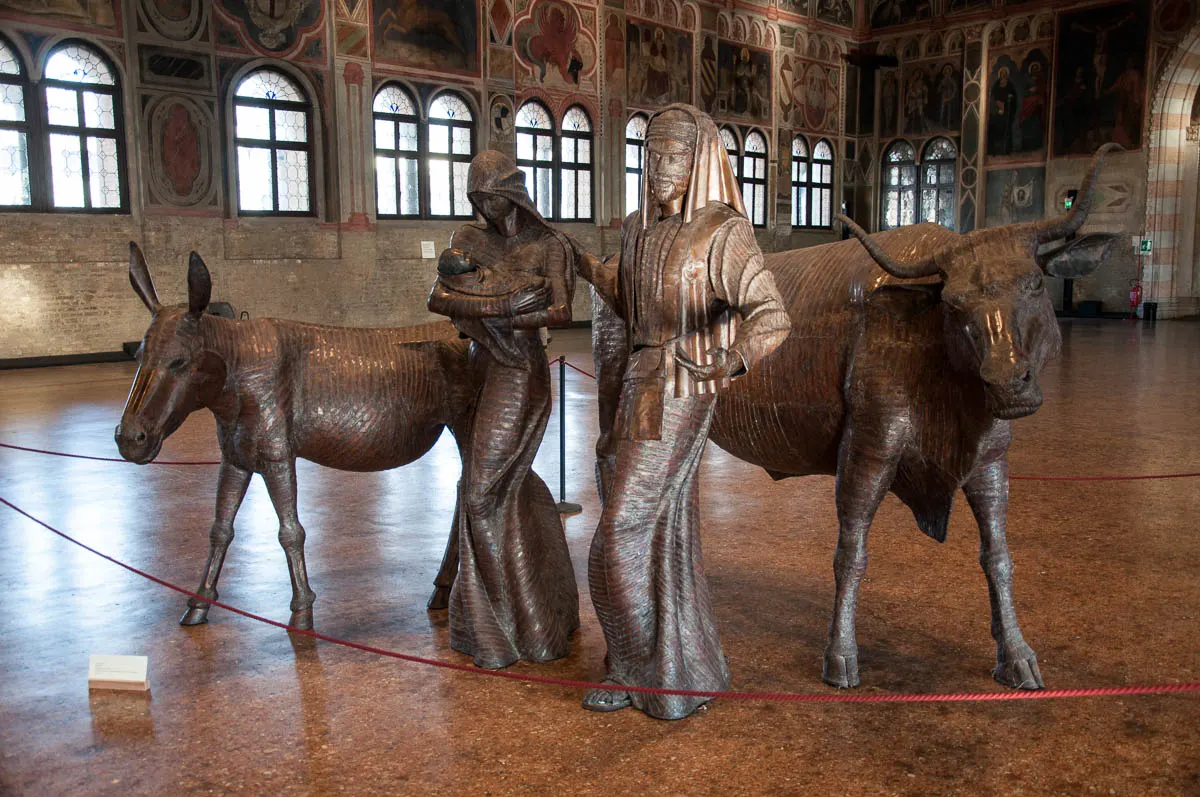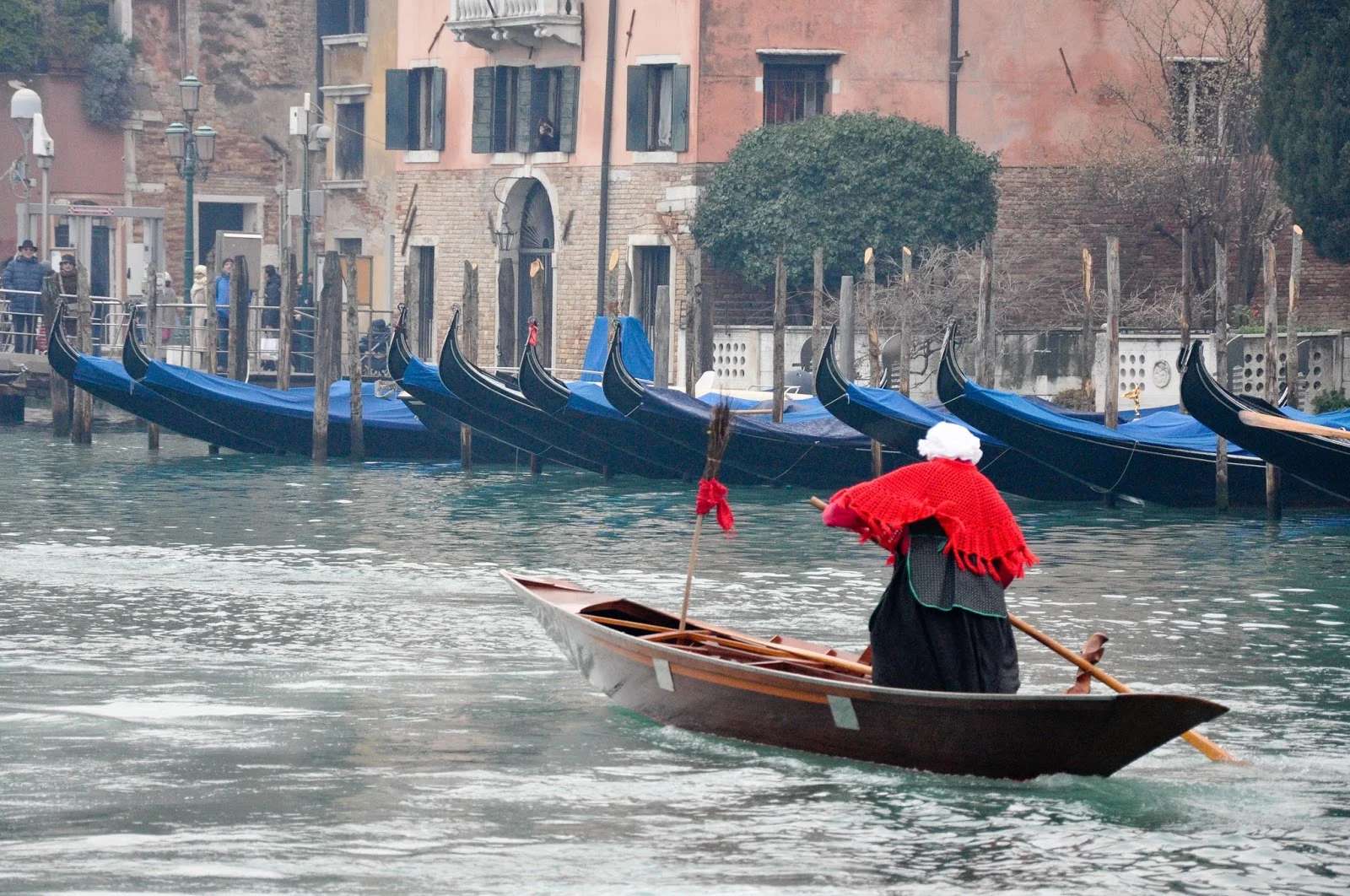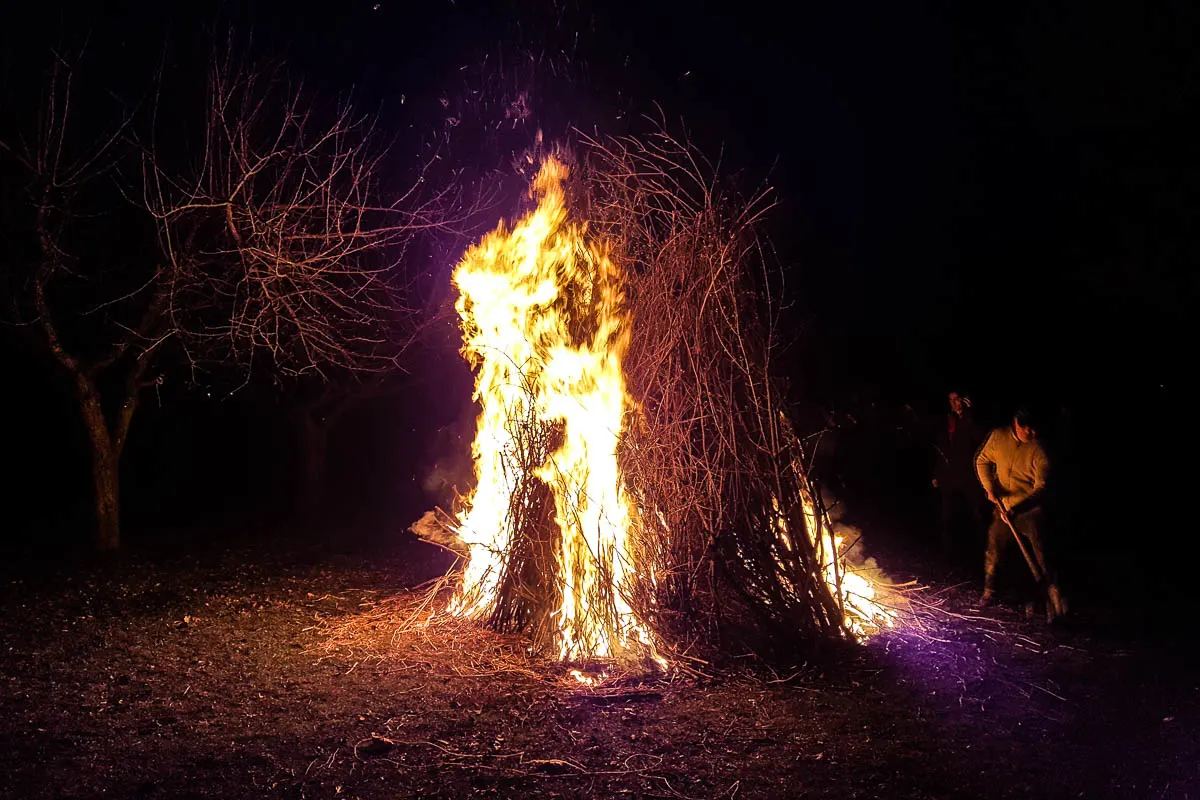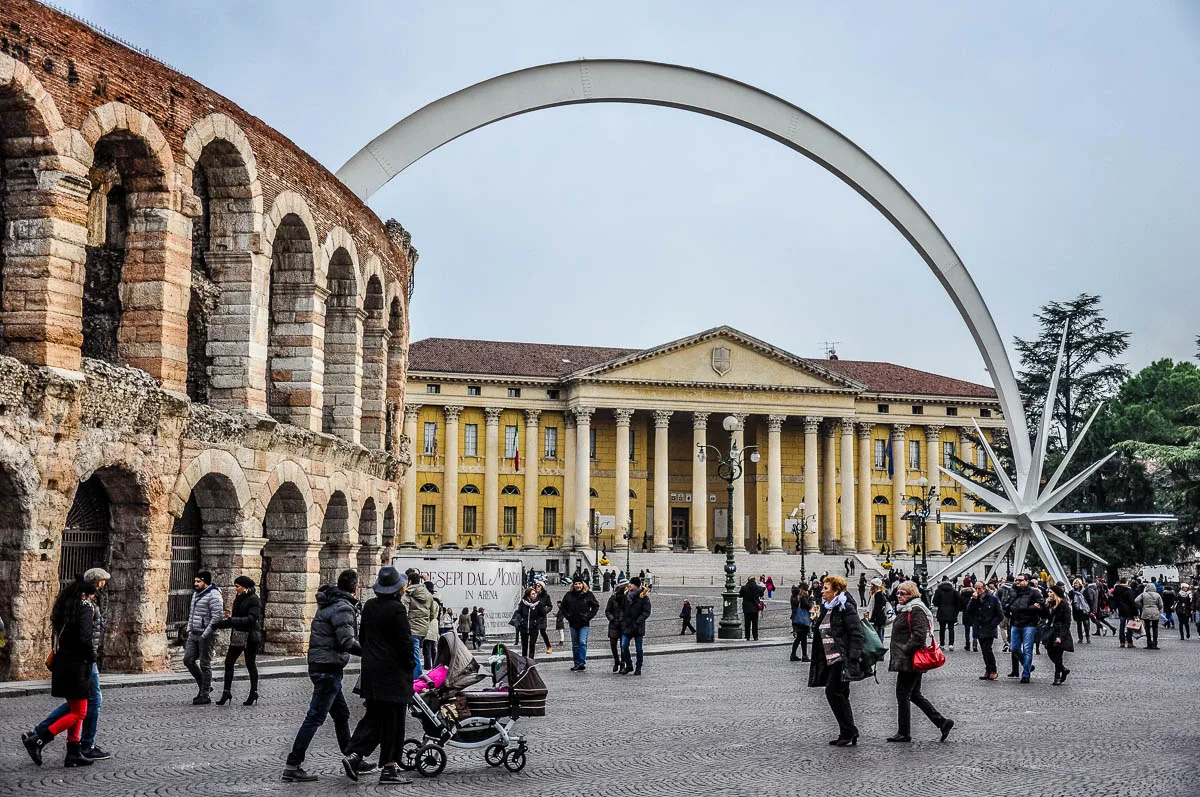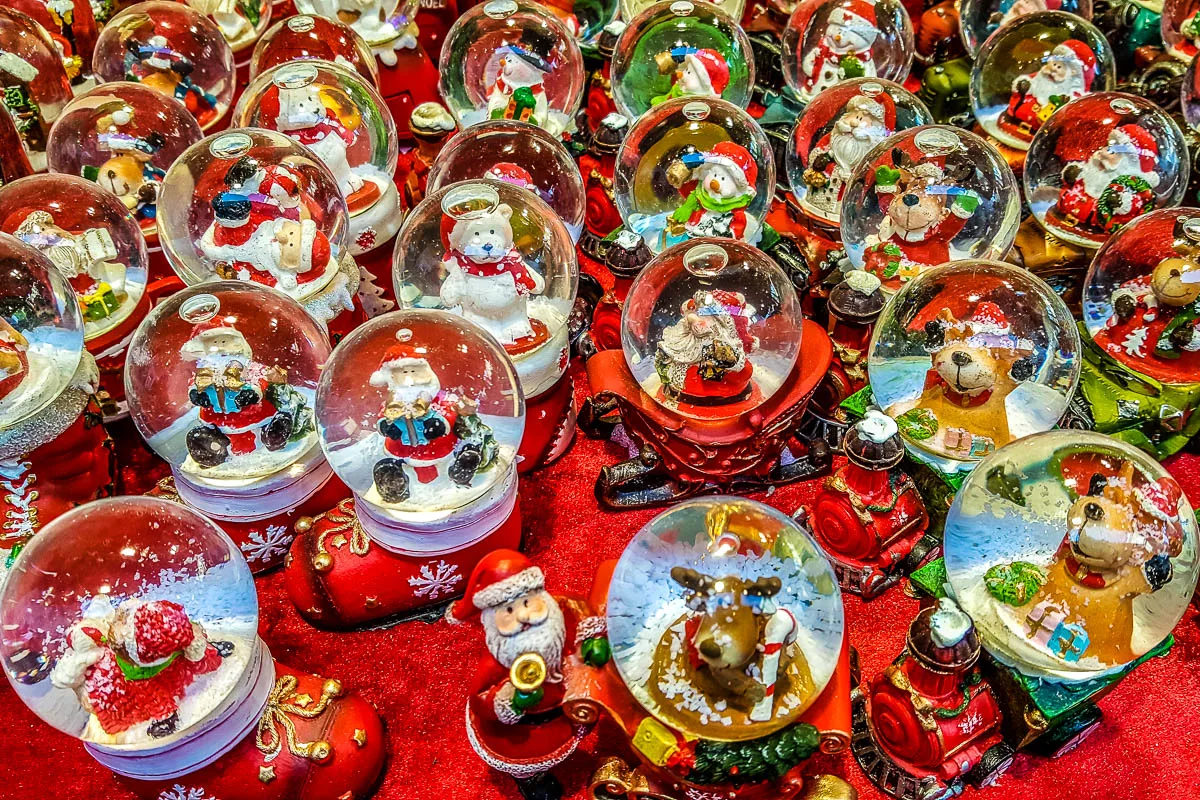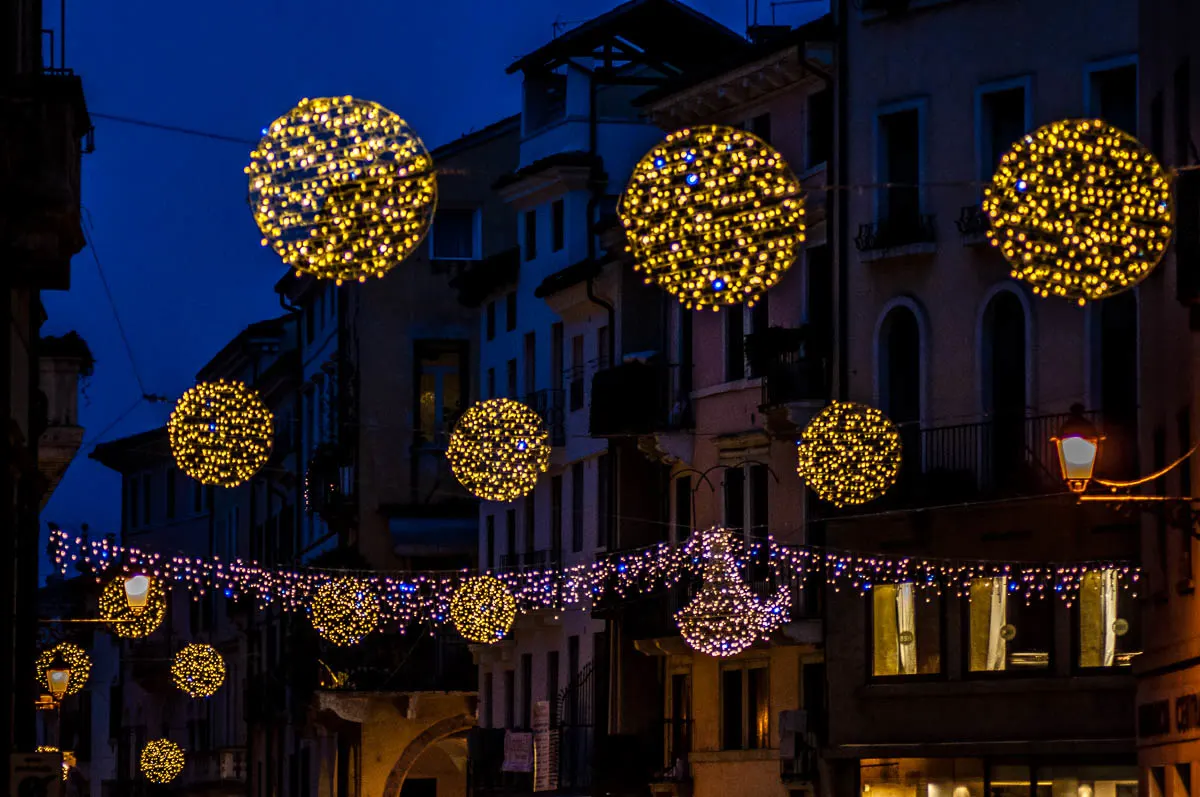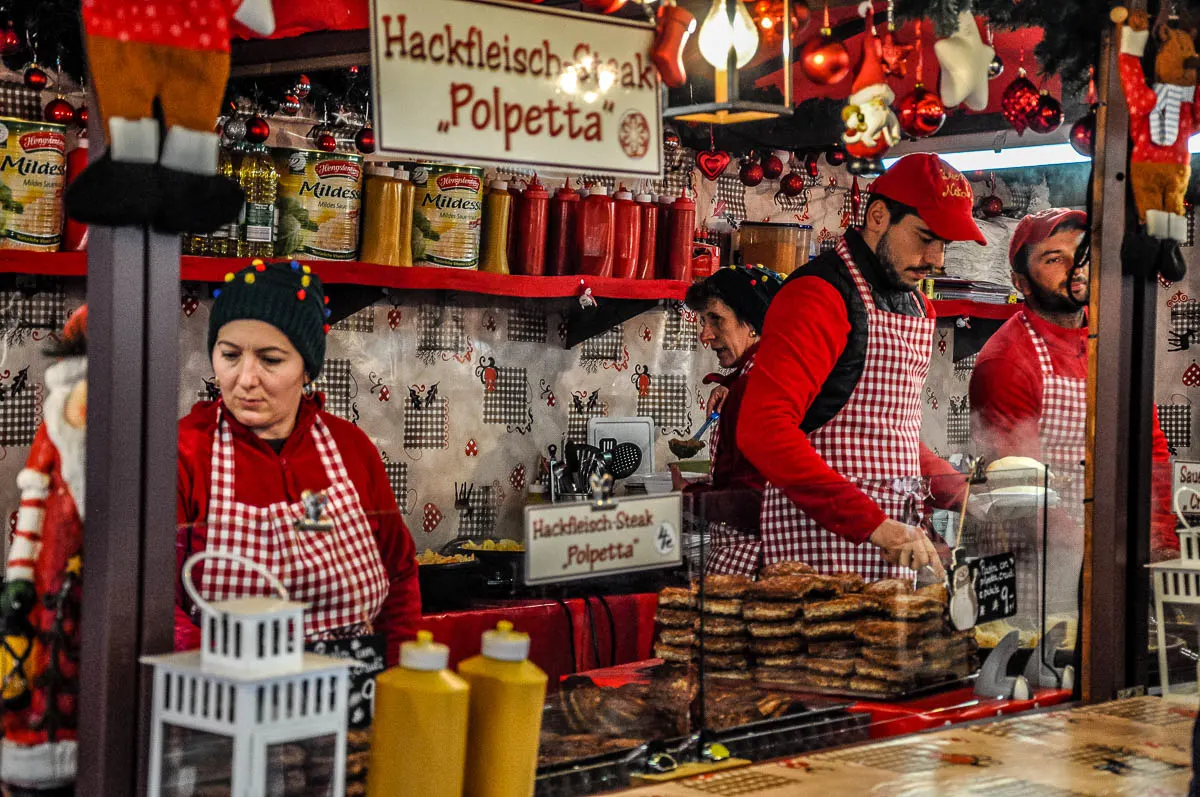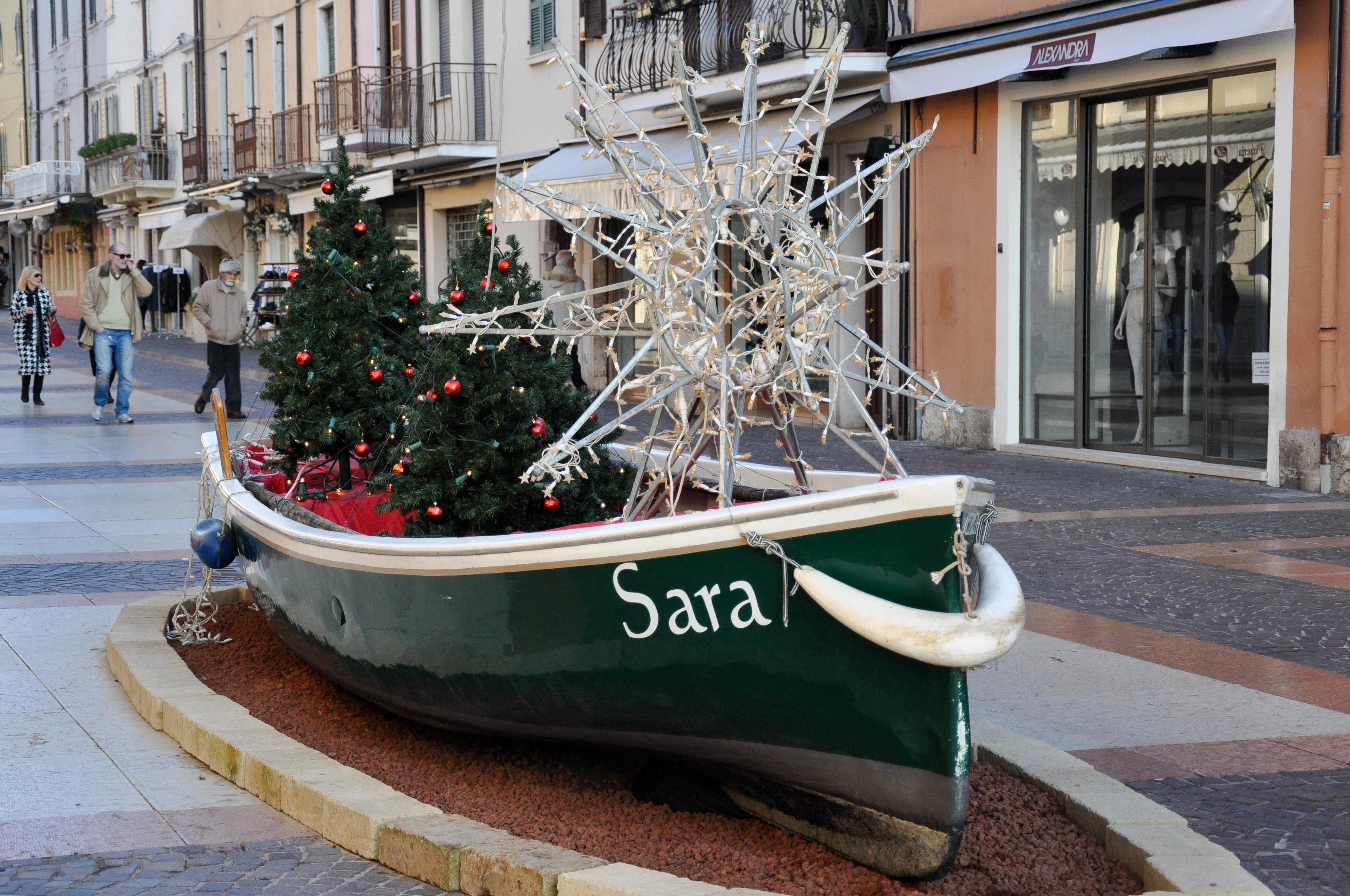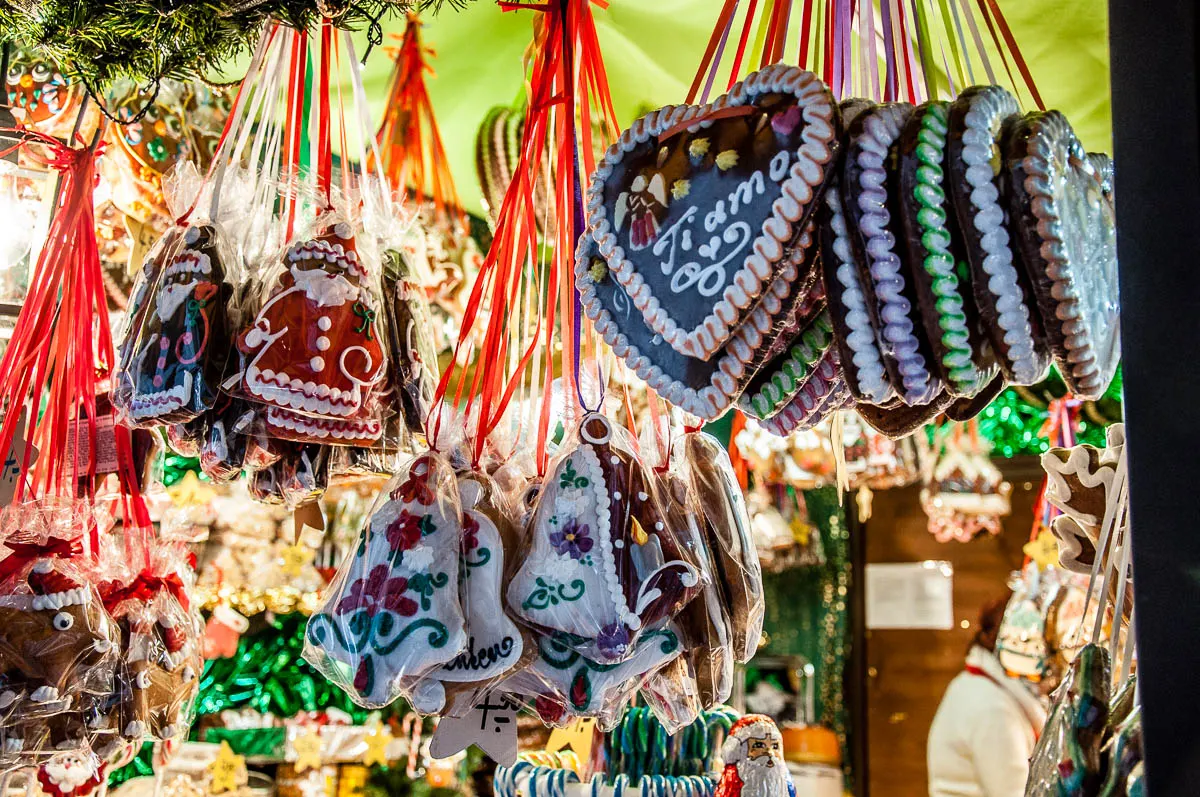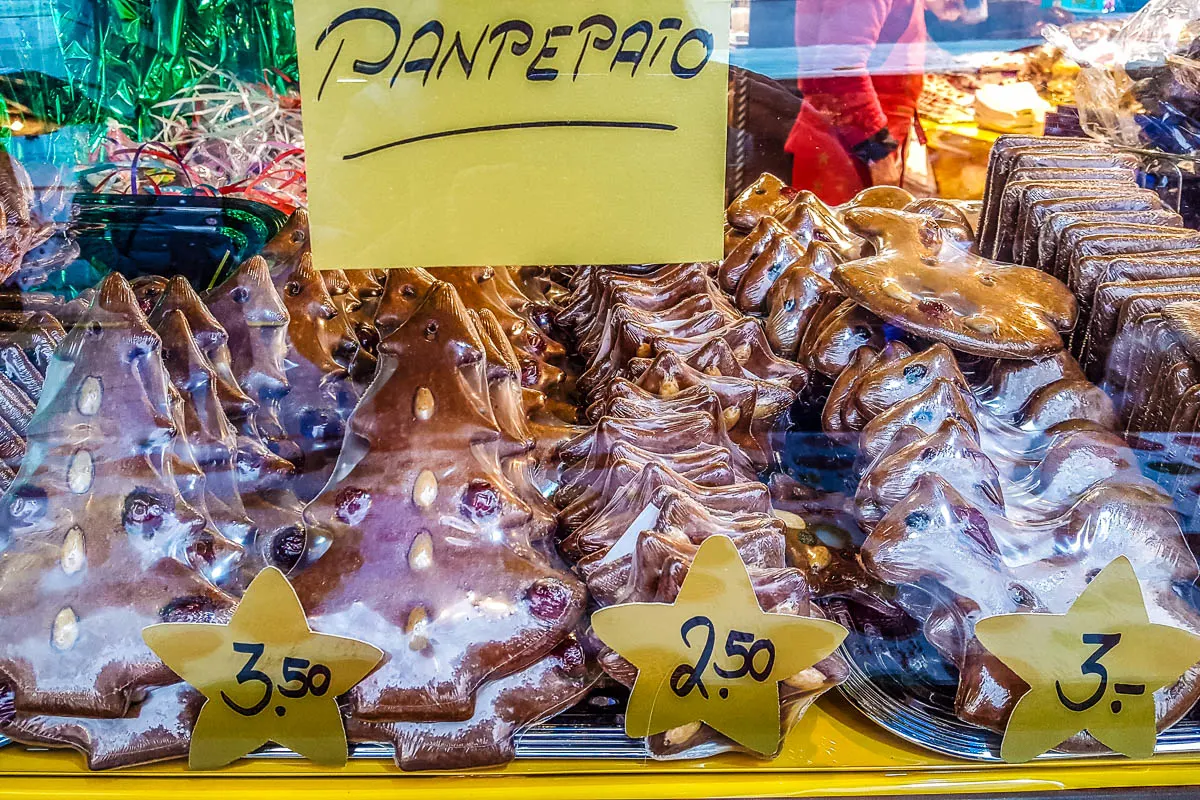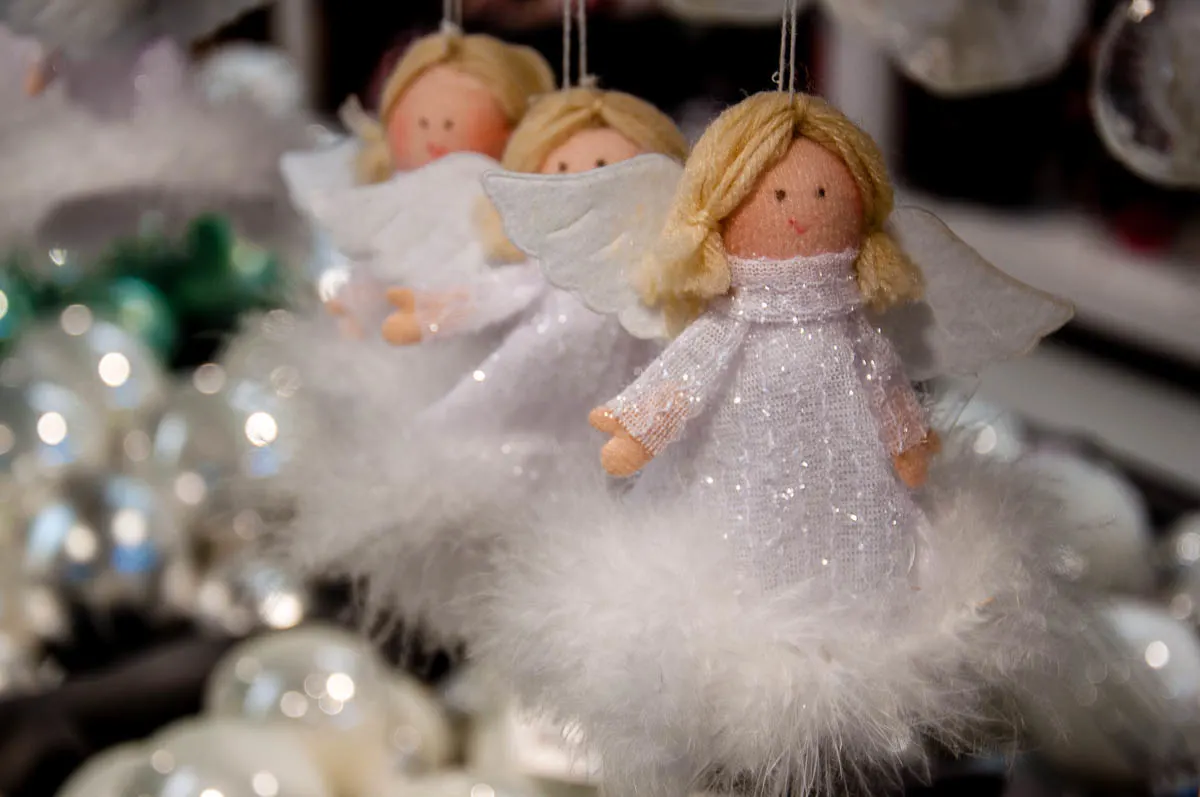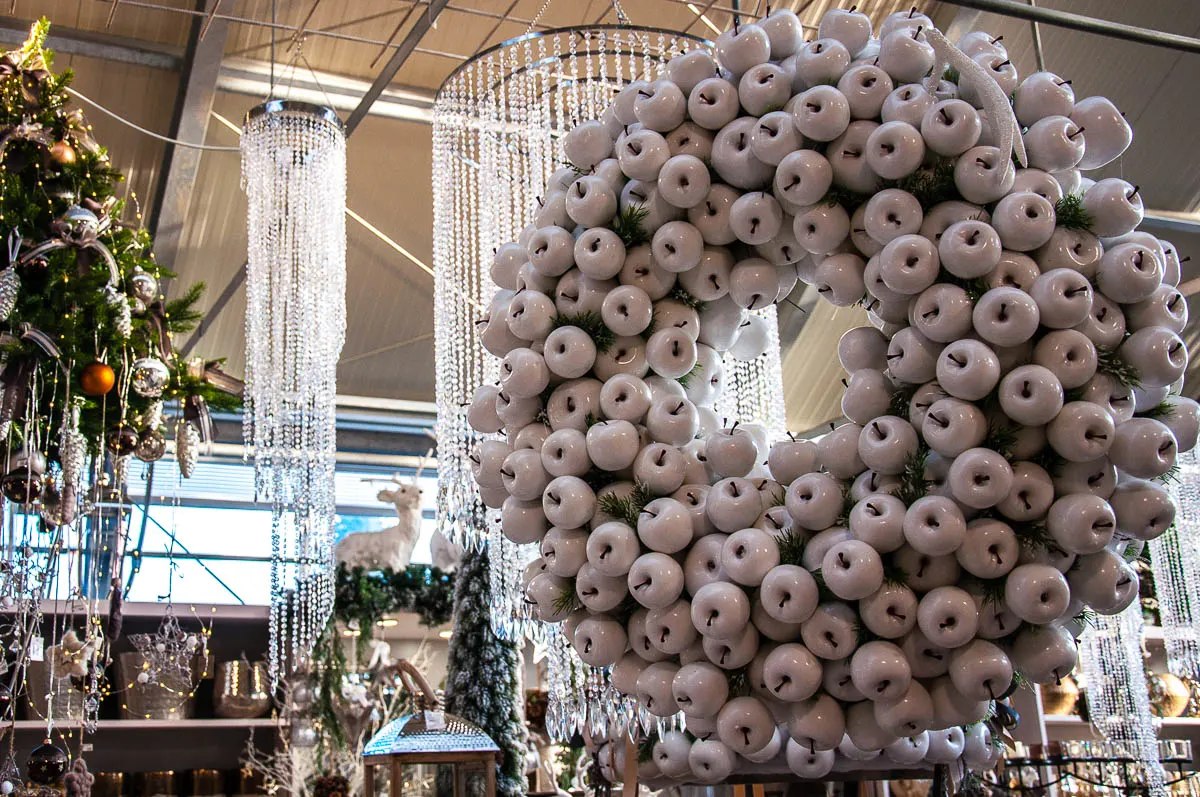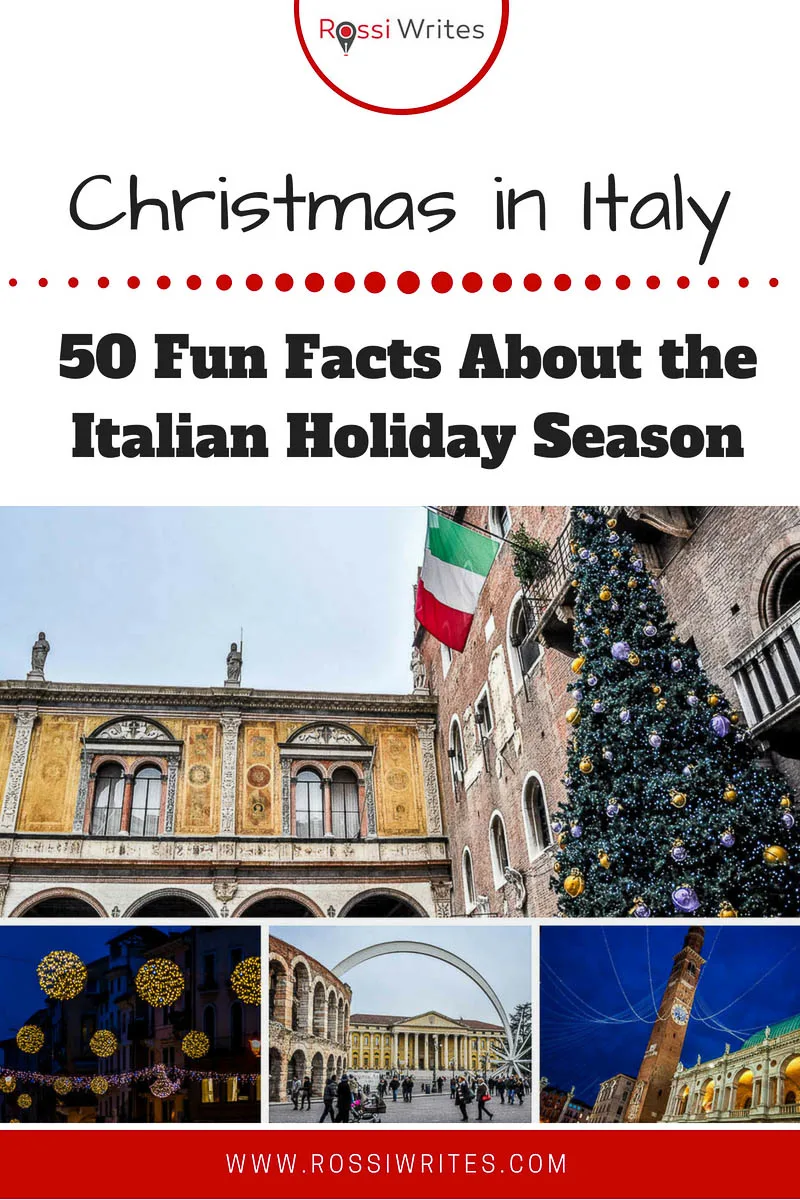Italy is a wonderful country to visit and explore. Especially at Christmas, when festive markets, music concerts, religious celebrations and gourmet eating are the order of the day.
It’s entirely possible that you have never considered coming to Italy for Christmas. After all, this is one country traditionally synonymous with hot weather, blue seas, and summer holidays.
Yet, knowing first hand the delight that Christmas in Italy is, I can honestly tell you that should you be looking for an authentic place to spend the holiday season, start planning your Italian Christmas adventure now.
On one hand, Christmas in Italy is still very much a family event when people get together and offices close for the duration of the holidays. On the other hand, in winter and especially around Christmas tourist crowds are much, much smaller in the Italian hotspots and non-existent off the beaten track.
Festive traditions abound, beautiful handmade Nativity scenes are set up everywhere, and thick gooey hot chocolate is the drink of choice. Plus, if you venture north to the Italian portion of the Alps and the Dolomites you will be almost guaranteed a snowfall and a picture-perfect white Christmas.
So, in case you are feeling intrigued, let me share with you everything I have learned over the last four years about spending a wonderful Christmas in Italy. I have organised my first-hand, tried and tested information in easy to absorb and inspire bite-size fifty facts.
By the end of reading them, you will know:
- How do people celebrate Christmas in Italy;
- What do they call Christmas in Italy;
- What food is eaten at Christmas in Italy;
- What are some Christmas traditions in Italy; and even
- What cake or cakes are traditionally eaten in Italy at Christmas?
So that even if you can’t (for whatever reason) spend the next holiday season in Italy, at least you would have:
- learned your panettone from your pandoro;
- absorbed a lot of Italian trivia to dazzle everyone with at any Christmas parties you will be attending from now on; and you would have also
- spent five joyous minutes slowly filling up with pre-Christmas cheer like a cup of thick Italian hot chocolate.
Enjoy!
And a very Buon Natale to you! (Because Natale means Christmas in Italian!)
It’s a bit early to wish you Merry Christmas, albeit in Italian?! Oh, no, no, no! Natale will be upon us before you know it, so start getting ready now:
Christmas in Italy – 50 Fun Facts About the Italian Holiday Season
Italian Christmas Traditions
1. Christmas-related celebrations in Italy traditionally start on the 8th December and conclude on Epiphany – 6th January.
2. 8th December is a public holiday in Italy marking the Feast of the Immaculate Conception and the day on which Italians traditionally decorate their Christmas trees and their Nativity scenes.
3. Decorated pine trees are newcomers to Christmas in Italy though. Nowadays you can see them in homes and squares but they were not there as recently as fifty years ago. A Christmas tree was erected for the first time in St. Peter’s Square in the Vatican in 1982. This is when the then serving Pope John Paul II chose to introduce this Northern European symbol of Christmas to the festivities taking place in Rome. The first tree came from Italy, but since then a different European country donates a huge tree every year.
4. Instead, beautiful Nativity scenes are the focus of the Christmas decorations and spirit in Italy. Also known as a manger scene or a crib in English, they are called presepio or presepe in Italian and are carefully arranged in churches, city squares and private homes all over the country. The Nativity scenes represent the Holy Family in the stable. They can be small with tiny figurines or human-size. In many places, the whole town of Bethlehem is recreated in minute detail around the stable – from the marketplace with all sorts of stalls and craft workshops to many different animals, houses and even people going on about their daily lives. It is interesting to note that these Nativity scenes often reflect local customs and traditions so don’t be surprised to see a market stall selling Italian cured meats and salumi or a bunch of Arlecchini with masks, for example, which certainly were not the custom at the time of the birth of Jesus.
5. Traditionally, the best makers of Nativity scenes come from Naples where the making of Christmas cribs is a form of art which has been mastered for many centuries. All year round you can visit the Museo Nazionale di San Martino which hosts Naples’ largest collection of Nativity scenes and figurines. The largest huge Nativity scene there apparently includes 162 people and 80 animals, as well as 450 miniature objects. If you want to buy your own Nativity scene or elements to build up on the one you already have, head to the Via San Gregorio Armeno in Naples where dozens of shops sell year-round everything you may ever need to build up the most wonderful Christmas crib.
6. Otherwise, Nativity scenes and the elements to build one are sold all over Italy during the festive Christmas season. You will find shelves upon shelves stacked high with figurines of the infant Jesus and various Biblical characters in the most refined artisan shops, at festive Christmas markets and even in the local supermarkets. Modernised versions of the cribs also include electrified elements so that you can run real water through the wheel of a mill or illuminate the stable with tiny light bulbs.
7. Even though the Nativity scenes in churches, squares and front yards are set-up before Christmas, traditionally the figurine of the Infant Jesus should be added to the manger only on Christmas Day. In some Italian families, kids receive a handful of hay for each good deed they do during the month of December. They use the hay to layer the manger and make it more comfortable for the baby to come.
8. Exhibitions of dozens and sometimes even hundreds of Nativity scenes from all over Italy and the world are also held all through the country during the festive season. One of the most famous ones is the International Exhibition of Nativity Scenes which has been held each December/January in Arena di Verona for more than three decades. More than 400 cribs from all over the world are arranged under the internal arches of the Roman amphitheatre.
9. The oldest Nativity scene in existence is carved in marble and dates back to the 13th century. His author is Arnolfo di Cambio – a renowned gothic sculptor and architect who worked in Florence and Rome. The marble Nativity scene he created in 1290 is currently on display in the museum of the church Santa Maria Maggiore in Rome.
10. Living Nativity scenes are also organised at Christmas in Italy. Groups of local volunteers stage elaborate representations of the Christmas story in caves, on town squares or as a procession along a town’s or city’s main streets. The walled town of Cittadella in the Veneto, for example, has a living Nativity scene on its medieval defensive wall which can be circumnavigated on foot. In some cases, such living Nativity scenes can have hundreds of participants. For more information, please, click here to read my account of the first Living Nativity scene I saw for myself in Vicenza, Northern Italy.
11. The first living Nativity scene was, allegedly, held in 1223 in the Italian village of Greccio in Lazio. It was organised by St. Francis in order to nurture the worship of Christ. According to The Life of St. Francis of Assisi by the Franciscan monk St. Bonaventure, St. Francis set up a manger in a cave with two live animals – an ox and a donkey – and then, overcome by emotion, he preached to the people who had come to see him.
12. Italy is the birthplace of the Christmas Carol, too. Allegedly, St. Francis of Assisi introduced the Christmas tradition of carolling. Unlike the solemn church hymns, carols were simple songs which people could sing anywhere as an expression of their joy at the birth of Christ.
13. At Christmas in Italy there are four gift-giving traditions. Click here to read about them in detail. In a nutshell, they are:
- 6th December – when St. Nicholas visits the upper Northern regions of the country;
- 13th December – when Santa Lucia leaves presents for good kids mainly around Northern Italy;
- Christmas Eve/Christmas Day – when either the modern Babbo Natale (Father Christmas) or the more traditional Baby Jesus bring presents to kids all over Italy; and
- 6th January – when Befana – a broom-riding old lady with a long nose – fills the stockings of good children all over Italy with sweets and leaves a lump of coal for those who have misbehaved through the previous year. (Click here to read more about the traditional Befana race held in Venice each year.)
14. The lump of coal nowadays is actually a piece of black rock candy. Also, ready-made stockings stuffed with sweets and the obligatory piece of black rock candy are sold in Italian supermarkets for most of December.
15. In the evening of the 6th January, large bonfires are set alight all over Italy on which a human-sized puppet representing Befana is burned. It is an obvious throwback to pagan rituals – burning the old in order to welcome the new year in, purification through fire and a never-ending cycle of renewal. We saw Befana being burned on a large bonfire our first Christmas in Italy and it was a memorable experience.
16. With regards to gift-giving, there is yet another delightful Christmas tradition in Italy. A selection of wrapped small presents is put in a bowl (called the Urn of Fate) and when the family gathers together on Christmas Day, everyone takes his turn to pick a present.
17. You know how children in English-speaking countries leave a carrot, a mince pie and a glass of whiskey out for Santa and his reindeer on Christmas Eve? Italian children leave a plate with food for Santa Lucia and hay, milk or carrots for her donkey. The saint delivers presents on the night of the 12th to 13th December (see point 10 above). The tradition of Santa Lucia nowadays is mainly observed in the north of Italy (especially in Verona).
Wondering where to find the best Christmas markets and events in Northern Italy?
Click Here: Christmas Guide for Northern Italy – The Ultimate List of Christmas Markets, Events and Happenings
18. Bagpipe players called zampognari come out to play on the streets of Italian cities and towns in the eight days before Christmas. Although this tradition is stronger mainly in Southern Italy, we saw our own zampognaro on the streets of Vicenza in the North a few Christmases back. Dressed with a heavy cloak and with furs wrapped around his calves, he told us he was from nearby Asiago and when he found out that I am Bulgarian, to my utter amazement, he sang the most haunting Balkan folk song which brought tears to my eyes.
19. What in England is known as Boxing Day is St. Stephen’s Feast Day in Italy. This is when the families welcome more distant relatives and friends round the table for a festive lunch and to exchange gifts with them.
Modern-Day Christmas in Italy
20. Christmas in Italy is a much less commercial event than in England, for example. There are no endless shopping trips, the radio doesn’t play Christmas songs on loop and the shops, even though they get a bit busier than usual, remain a calm and organised place. Shoppers don’t pull items off the shelves and rails, only to discard them a minute later on the floor. There is no tension and stress in the air, at least, in Vicenza and the other towns and cities of Northern Italy I have been to during the past four years of living here.
21. I was chatting to someone in England the other day and they told me they will be working until late in the afternoon on Christmas Eve and then will return to work straight after Boxing Day. Italians don’t reduce the Christmas celebrations to a day. Traditionally, businesses close for about two weeks – from the day before Christmas Eve all the way to Epiphany. Obviously, restaurants, hotels and tourist sights remain open, but otherwise, Christmas in Italy means time off work to spend with your family and to enjoy the festivities.
22. Christmas markets are ubiquitous in Italy from the end of November to Epiphany. They are especially atmospheric in the northern provinces of Alto Adige (South Tyrol) and Trentino. I love the Nuremberg Christmas market in Verona. The markets in Bolzano and Merano are very popular, too.
23. Each year a huge shooting star made of white iron is attached to Arena di Verona – a Roman amphitheatre which is older than the Colosseum in Rome. It symbolises the star which led the Three Wise Men to the birthplace of Jesus. The metal star has been erected at Piazza Bra every year since 1984 and it has become an intrinsic part of the Christmas experience in Verona. The structure is 70 metres high and it weighs a staggering 78 tons.
24. Sending Christmas cards is not as popular in Italy as it is in England, for example. Families and relatives see each other often here, so, perhaps this is why they don’t feel the need to spend time writing identikit wishes on colourful pieces of carton. The other reason could be that Christmas cards are rather expensive with a simple card from the local supermarket costing anything from 2.90 euro upwards. Better spend the money on panettone and pandoro!
25. Santa Claus runs are organised in many Italian towns and cities in the run-up to Christmas. You can take part for a fee of about 10 euros or less which includes a Santa Claus’ outfit, a cup of hot chocolate and a slice of panettone. Seeing hundreds of Santa Clauses running up and down the historic streets of Venice, Verona and other notable Italian cities is a really fun sight.
26. In Venice, there is even a Santa Claus Regatta where people dressed as Santa compete in small traditional Venetian boats along the Grand Canal from San Marco (Pieta) to Ca Foscari. The regatta is traditionally held in the third week of December. There is also an accompanying water parade and children have the opportunity to meet Santa and his elves on Santa’s own boat.
27. Schoolchildren practice for months for the Christmas concert held in front of their parents either at the school’s hall or in a nearby church. It is a warm and hearty gathering with the adults clapping enthusiastically and waving to their children on the stage. It is quite cute, as children, mid-song, wave back, too. It is all captured on camera, as every parent holds a smartphone.
28. Nowadays more and more Italian children write letters to Babbo Natale (Father Christmas), but the original Italian tradition is for children to write letters to their parents to tell them how much they love them. The letters are then read in front of the whole family during the Christmas lunch.
29. Everyone goes to Christmas midnight mass. Afterwards, people traditionally have cups of hot chocolate with whipped cream and a slice of toasted panettone. Often they will be served by the local scouts or a charity group in front of the church. If not, then you have them as soon as you reach home.
30. While the big Christmas sales in England traditionally start on Boxing Day (26th December), in Italy the winter sales start around 5th January. This way you can focus on the festivities for as long as possible and still have a couple of days for shopping at the sales before going back to work in the New Year.
31. Online shopping is playing a much bigger role for Christmas in Italy than less than ten years ago. According to data published by the Italian news agency ANSA in November 2017, 46% of all Italians (that’s almost one in two) choose to buy presents on the Internet in comparison with a tiny 3.8% in 2009.
32. As for the amount of money spent on Christmas gifts, again according to data publicised by ANSA in December 2017, Italian consumers will spend on average 166 euros on presents. This is only a 2 euros increase on the average amount spent on Christmas gifts in Italy in 2016. At the same time, 14% of all Italians don’t spend any money on Christmas gifts.
33. Food items are the most popular gifts given for Christmas in Italy with 73.5% of shoppers spending money on them, followed by toys (48.7%), clothing (47.1%) and books (43.5%).
34. According to data from 2017 released by the FIPE (the Italian Federation of Bars and Catering), a Christmas Day lunch in a restaurant in Italy cost on average 50 euros for a set menu. About 9.4% of all Italians booked a table to have their Christmas lunch at a restaurant at an overall expense of 238 million euros.
35. When you are Christmas shopping in Italy, shops gladly offer to gift wrap for free your purchases. And it is not some half-inspired job with a cheap and thin piece of tissue paper kept together by large badly cut patches of sellotape. Instead, you get the full treatment with Christmas patterned paper, raffia bows and gift tags even for the smallest item. If a huge queue piles up behind you whilst you are being served, no-one moans or complains, as everybody expects to be given the same festive treatment.
36. The splendid Christmas lights which adorned our current hometown of Vicenza in Northern Italy last year cost the local council 110 thousand euros. The local shopkeepers contributed 60 thousand euros, too. All lights were energy saving.
37. Ice skating rinks spring up all over Italy during the Christmas season. So you have a chance to glide on ice in such iconic cities and locations as Florence, Venice and even Lake Garda. There is something to be said about skating in such stunning environments.
38. The Italian Santa Claus – Babbo Natale – has an excellent taste for location and real estate. Of course, you can see him in grottoes set up in shopping malls and Christmas markets all over Italy. Did you know though that he, actually, has a house in a very picturesque town called Riva del Garda right at the Northern extremity of Lago di Garda – Italy’s largest lake?! So, if you are thinking that he spends December hard at work at his workshop in Lapland, think again. He is actually relaxing in his lakeside villa where children and adults can visit him.
39. Throughout December Italians organise charity food collections for families in need. Volunteers hand out empty bags in the local supermarkets which shoppers can then use to put in food products purchased from the shop to hand back to the volunteers. Everyone buys what they can afford and no-one looks into the bag when it is handed back, thus making it a more personal and discreet way to donate.
40. Even though Advent calendars are an imported tradition, nowadays they are very popular in Italy. Shops sell a huge variety and not all have a chocolate or other edible incentive included for each day. Our first Christmas in Italy, we only remembered to buy an advent calendar on the 3rd December. The only calendar we could find at that time in the local bookshop was with Christian sayings in Italian using the example of Christ to give children ideas how to do good deeds. Opening each window and deciphering the Italian phrase became a lovely highlight of each day in the run-up to Christmas. Last year we got a fancy Lego Advent calendar.
Italian Christmas Food
41. Panettone is well-known beyond the borders of Italy as the sweet fruity bread generously studded with candied fruit pieces and raisins which is enjoyed during the Christmas season. It originally comes from Milan and it takes 20 hours for the dough to rise three times, which helps produce the domed shape of the panettone and gives it its light porous texture.
42. As a matter of fact, in Italy panettone is often served lightly toasted. It sounds wacky until you have tried it. Speaking from personal experience, please, be aware that raisins can really mess up your toaster so it is best to use the grill in your oven. This way you also wouldn’t have to worry about cutting your panettone into tiny diddly pieces to fit your toaster.
43. Pandoro (in English ‘golden bread’) is Verona’s answer to Milan’s panettone. It is a very tasty and sweet bready cake, also eaten at Christmas in Italy. Pandoro is, yes, golden in colour thanks to the eggs used in its preparation. It is a tall, star-shaped cake which is served sliced and sprinkled with icing sugar so as to look like the snow-covered caps of the nearby Dolomites. Newer varieties of pandoro are now being sold with chocolate and custard fillings. Even though they depart from tradition, they are simply yummy (based on our own personal taste tests held over four Italian Christmases!).
44. The traditional desserts of a Christmas in Italy are:
- panforte – a type of dry cake made of honey, spices, candied fruit and almonds, which is typical for the Tuscan city of Siena;
- torrone – Italian nougat made with almonds (also called mandorlato), hazelnuts or even peanuts, which can be either very hard or soft. Torrone di Cremona (produced in the Lombardian city of Cremona) and Mandorlato Veneto (made in the Venetian medieval walled town of Cologna Veneta) are two of the most famous Italian nougats;
- panpepato (or pampepato) – typical for Central and Northern Italy, this is a chocolate-covered cake made with fruits, nuts, pepper, nutmeg and citrus zest;
- and tronchetto di Natale – a chocolate yule log.
45. Hampers with fine foods and wines are a popular Christmas gift in Italy. Supermarkets and small delis sell a huge variety of these hampers all through December. They can cost anything from 6 euros for a set of panettone and a bottle of sparkling wine to hundreds of euros for a luxury basket stuffed with the best of the Italian food products.
46. The Italian Christmas Eve dinner is traditionally meat-free. Christmas Eve is called La Vigilia in Italian and only vegetables, pasta, and fish are served.
47. Christmas lunch is a lengthy and sumptuous affair in Italy with the emphasis on getting the family together and feasting on fabulous food. Some traditional dishes include cotechino sausage, liver pate crostini and tortellini in chicken stock. The main dish is lamb. The meal options though differ widely from region to region.
48. Instead of using them to stuff a turkey, Northern Italians have a better use for chestnuts. They cook them in sugar syrup and glaze them to make marron glace (also popular in France, as the name suggests). These sugared chestnuts are very tasty and make a very elegant Christmas gift. In a nice Italian patisserie, you can expect to pay anything from around 6-7 euros per 100 grams of marron glace. Make sure you treat yourself to at least one!
49. Food allergies and the aspiration to eat clean have led to traditional Italian Christmas recipes being adapted so that everyone can enjoy the festive food. So, torrone (see point 44 above) is now being made for the first time without eggs while gluten-free, dairy-free and even candied-fruit-free varieties of panettone are now being sold, too.
50. Italians call mulled wine vin brule. Made with red or white wine, it is a staple drink at any self-respecting Christmas market.
In Conclusion:
Christmas in Italy is a wonderful time of the year. Expect centuries-old traditions, beautiful Nativity scenes, some fun modern touches and lots of delicious festive food.
If you are wondering where to head to this Christmas, make it simple and pick Italy. After all, this is the country the colours of the flag of which replicate perfectly the traditional Christmas colours, i.e. green, white and red
I hope that you found the above fifty fun facts about Christmas in Italy a joy to read.
For More Information on Christmas in Italy, Please, Read and See:
- 15 Best Things to Do for Christmas in Italy
- Christmas Guide for Northern Italy – The Ultimate List of Christmas Markets, Events, and Happenings
- Panettone – Traditions and Secrets of the King of the Italian Christmas Table
- Italy’s 5 Christmas Gift-Bearers
- Christmas Markets – Best 5 Things to Buy This Festive Season
- Mandorlato Veneto – The Taste of Italian Christmas
- Christmas at Lake Garda – A Great Italian Day Trip
- Our Second Christmas in Italy
- My Best Italian Christmas Experience: The Living Nativity Scene in Vicenza
- Setting Up for a Magical Christmas
- Video of the underwater Nativity scene in Garda Town on Lake Garda
- Video of the Christmas lights in Vicenza, Northern Italy
- Video of the Nativity scene in the Convent on Mount Berico in Vicenza, Northern Italy
- Video of putting up the Christmas lights in Vicenza, Northern Italy
- Video of the ice rink in Cittadella,Veneto, Northern Italy
Have you had the chance to spend a Christmas in Italy? What were your favourite moments? Let me know!
Thank you for reading! Please, leave me a comment, pin the image below or use the buttons right at the top and at the end of this blog post to share it on social media.
For more useful information like this, you can like my blog’s page on Facebook and subscribe to my weekly strictly no-spam newsletter.


